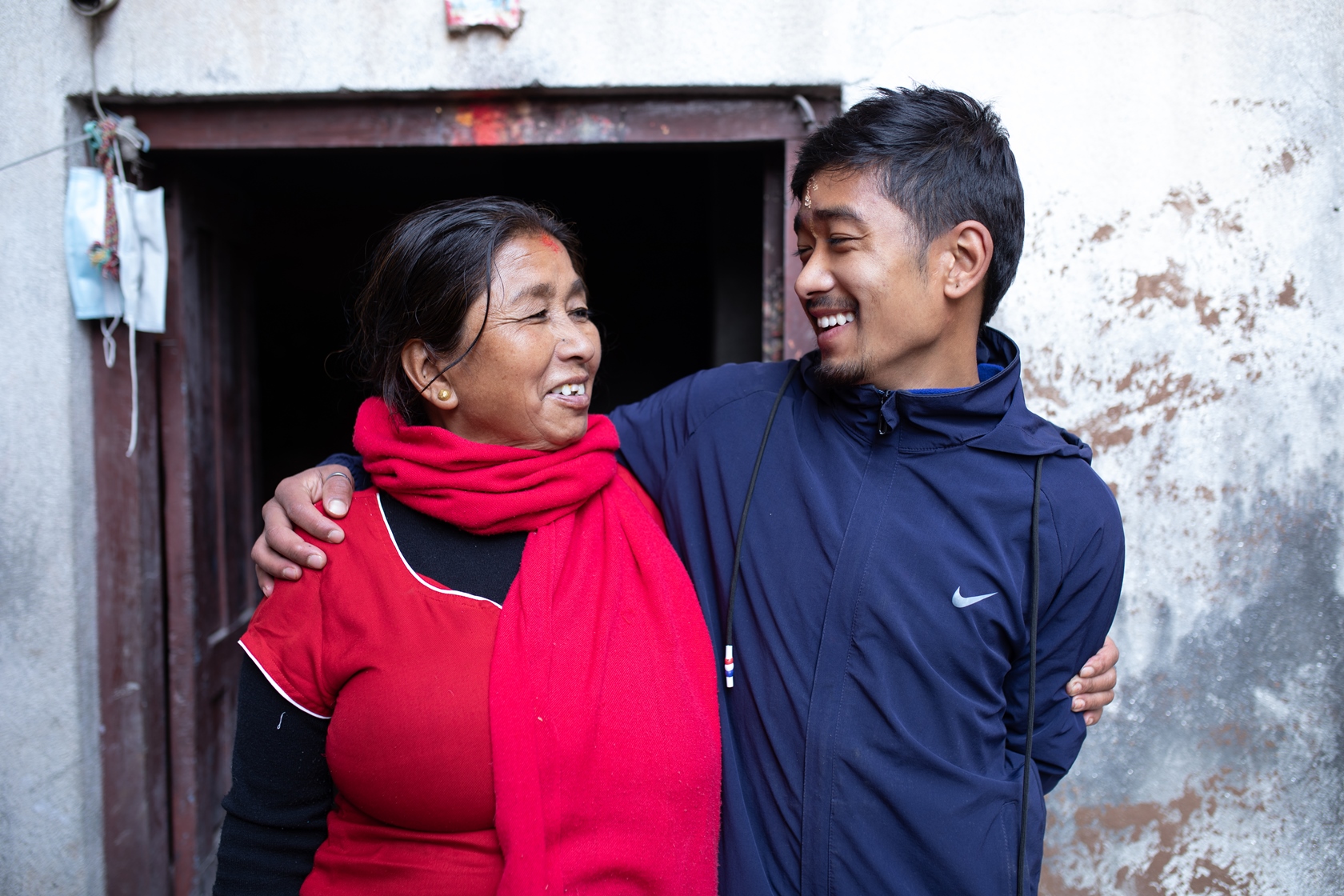The healer of Pashupati
Bhawanath Bhattarai was 80 years old when he was brought to Pashupati to die.
After falling ill at his home in Sunsari district, he was rushed to a hospital in Kathmandu. The doctors said they could not do anything for him, and the end was near.
As was the custom, the family brought Bhattarai to Pashupati. He was held inclined in a stretcher so that his feet touched the sacred waters of the Bagmati to ensure smooth passage to heaven as he took his last breath.
Ayurvedic doctor Subarna Baidya was watching from the temple parapet as Bhattarai gasped at the steps to the river. He hurried down and brought Bhattarai to his Pashupati Aryaghat Sewa Kendra where he administered ayurvedic potions. The patient recovered, and was sent home 48 days later.
Read also: Seeing is believing, Sahina Shrestha
That was 20 years ago, and Baidya has never forgotten what his patient told him the day he was discharged: “Baidyaji, give me one of your photos, I will put it next to my god and worship you both.”
Bhattarai would live on for another 12 years, passing away at age 92. His daughters make it a point to visit the doctor at Pashupati every time they are in Kathmandu.
Subarna Baidya is descended from a long line of ayurvedic practitioners who have tended to the dying at Pashupati temple. (His surname actually means 'traditional healer'). His father Mohan Baidya looked after poet laureate Laxmi Prasad Devkota as he lay battling for breath at Pashupati for 11 days before he died in 1959.
Read also: Medicine goes back to its roots, Sonia Awale

Subarna was 11 then, and helped his father at the Pashupati Aryaghat Sewa Kendra as he treated and provided spiritual support to the terminally ill. After his father died in 1995, Subarna stepped into his role of the ‘Ghate Baidya’ (crematoria doctor).
While his skills as a practitioner of Ayurveda have been passed down to him through generations, Subarna Baidya institutionalised the practice in 1995, turning the Sewa Kendra into an Ayurvedic clinic. Most of his patients are in their final stages, after allopathic doctors in modern hospitals have given up trying to save their lives.
After they are brought to Pashupati, Subarna Baidya examines each patient -- asking about their diet, examining their bile, kidneys, lungs. He takes their pulse and then prescribes an appropriate ayurvedic medicine like tulsi seeds, cardamom, nutmeg, nageswar, ashwagandha,
Read also: Himalayan healers, Ayesha Shakya



"My father's knowledge of herbs, which he passed onto me, as well as my own study and research enabled me to devise treatment plans for liver-related diseases, cancer, asthma and jaundice,” says Baidya.
Treatment is free for most patients and the hospice has grown from one bed to 35 thanks to donations from patients who lived after being given up for dead.
Read also: The good doctor, Lisa Choegyal
Subarna Baidya remembers many of them. Like Bishnumaya Lama, who brought her five-year-old son Umit to Kathmandu from Kulekhani when he fell gravely ill 16 years ago. Doctors at a city hospital said the boy’s kidneys had stopped working, and gave him only a few days to live.
Grief-stricken, Bishnumaya brought Umit to Pashupati thinking it was for his funeral. But at the Pashupati Aryaghat Sewa Kendra, his health began to improve after Baidya's treatment. He was discharged after a month.
Amit is now a 21-year-old student. He says, “My mother is convinced it was the Baidya who saved my life.”
Read also: I am an amchi, Sabine Pretch


In 2007, Ek Bahadur Shakya’s family brought him to hospital in Kathmandu from Trisuli after both his kidneys failed. Doctors told the family to bring him home so he could live out his last days comfortably.
Prepared for the worst, Raju Shakya took his father directly to Pashupati. But within a month he was walking around and lived for another year.
“Thanks to Subarna Baidya I could spend more time with my father, he brought him back to life after hospitals had given up,” says Raju.
As Subarna Baidya’s fame spread, it was not just those in their last throes who came to his centre. Badri Kumari Gautam suffered from asthma, and was taken by her son to see Subarna Baidya after modern drugs did not make her better. Within a week of starting on Baidya's ayurvedic prescription, she started breathing easier.
Baidya has carefully saved letters that patients and relatives write after they get home. "The words are a source of constant inspiration and proves the importance of the work we do,” says Baidya.
Amchi renaissance, Naresh Newar


Subarna Baidya has saved latters written to him by patients.
To be sure, not everyone makes a miraculous recovery. After all, this is a place where people bring relatives when there is no hope left. Still, they believe that taking a last breath on the banks of the Bagmati is a passport to heaven.
Baidya has noticed that many patients are tired of fighting for life, and are waiting for their final goodbyes. “Many are waiting to see their children for the last time, and as soon as they come from abroad, they let go,” he says.
The building that houses the Sewa Kendra was rebuilt during the reign of Chandra Shamsher Rana, and it is showing its age. Despite being in the premises of the Pashupati Development Trust, it is in a dilapidated state.
For Subarna Baidya, this is where he has worked and lived for the past 30 years, carrying on the work of his ancestors. Every day, he mourns deaths of patients but also celebrates miraculous recoveries.
He says matter-of-factly, “Death is difficult, but on days I can send someone home, I sleep peacefully.”
Read also: Amchis want recognition, Naresh Newar
Adapted from the original in Himal Khabar.




